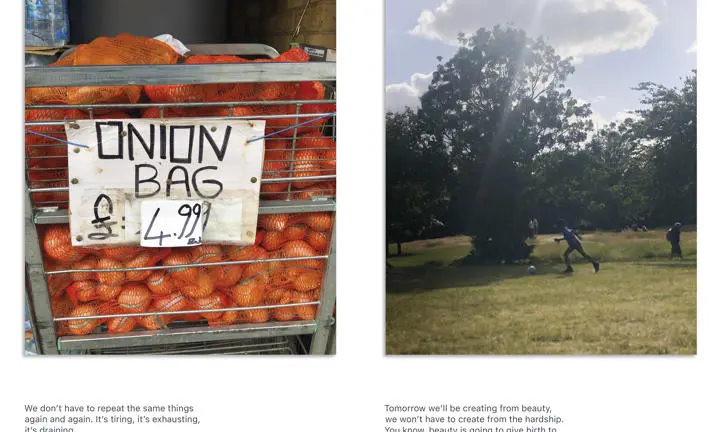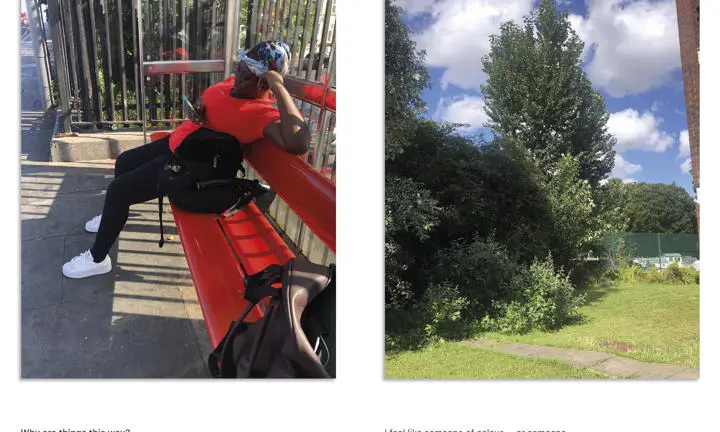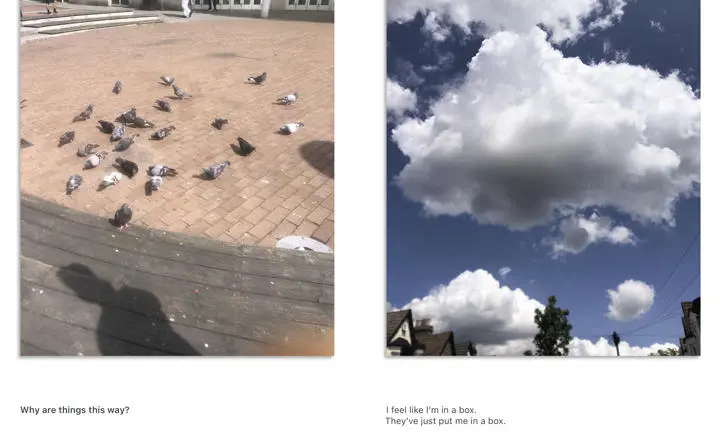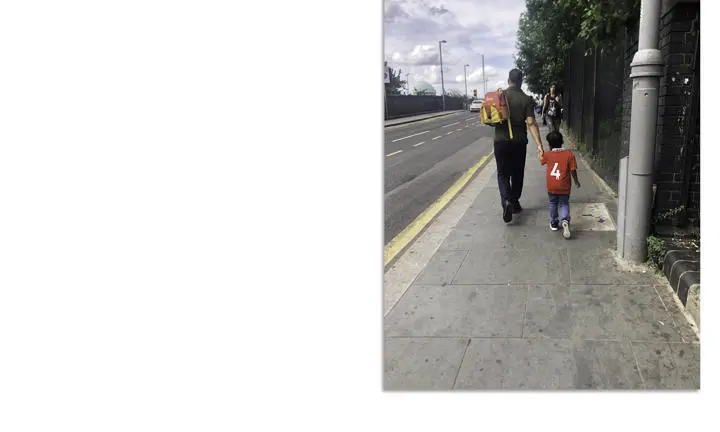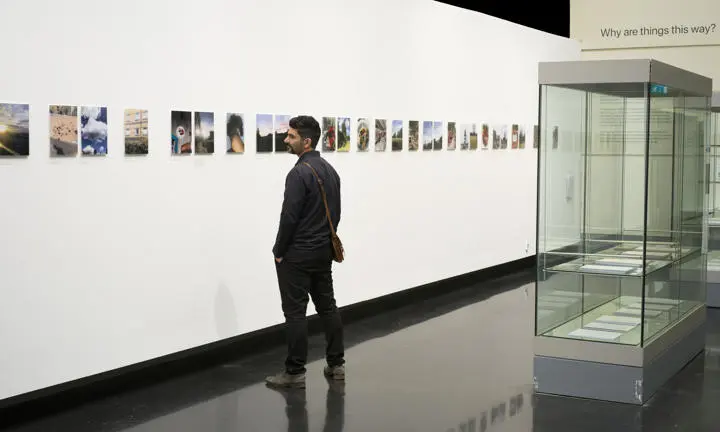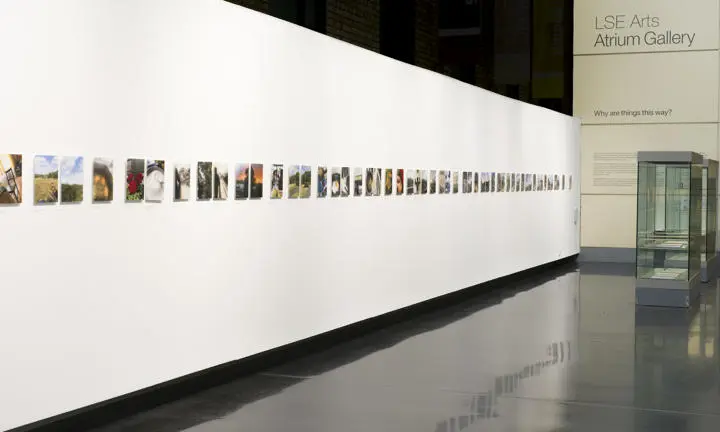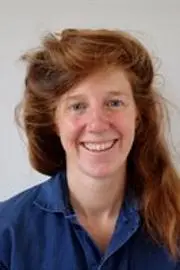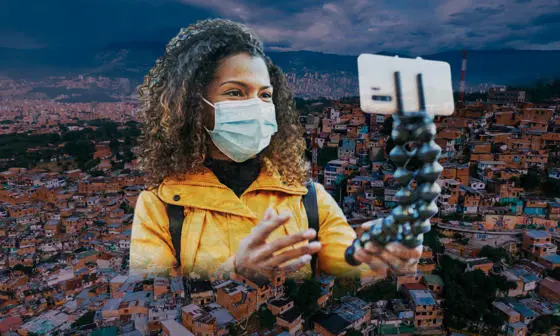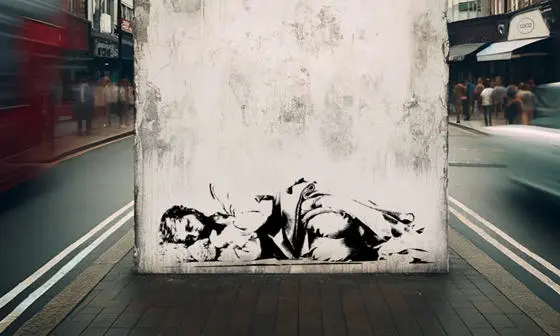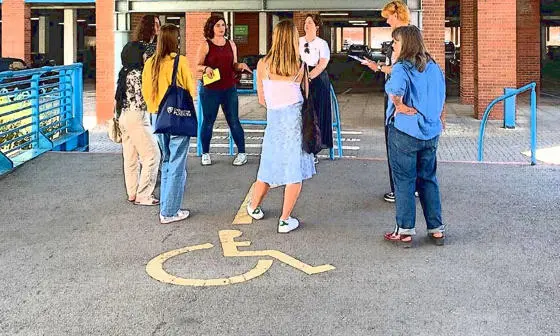Photographing the cost of living crisis
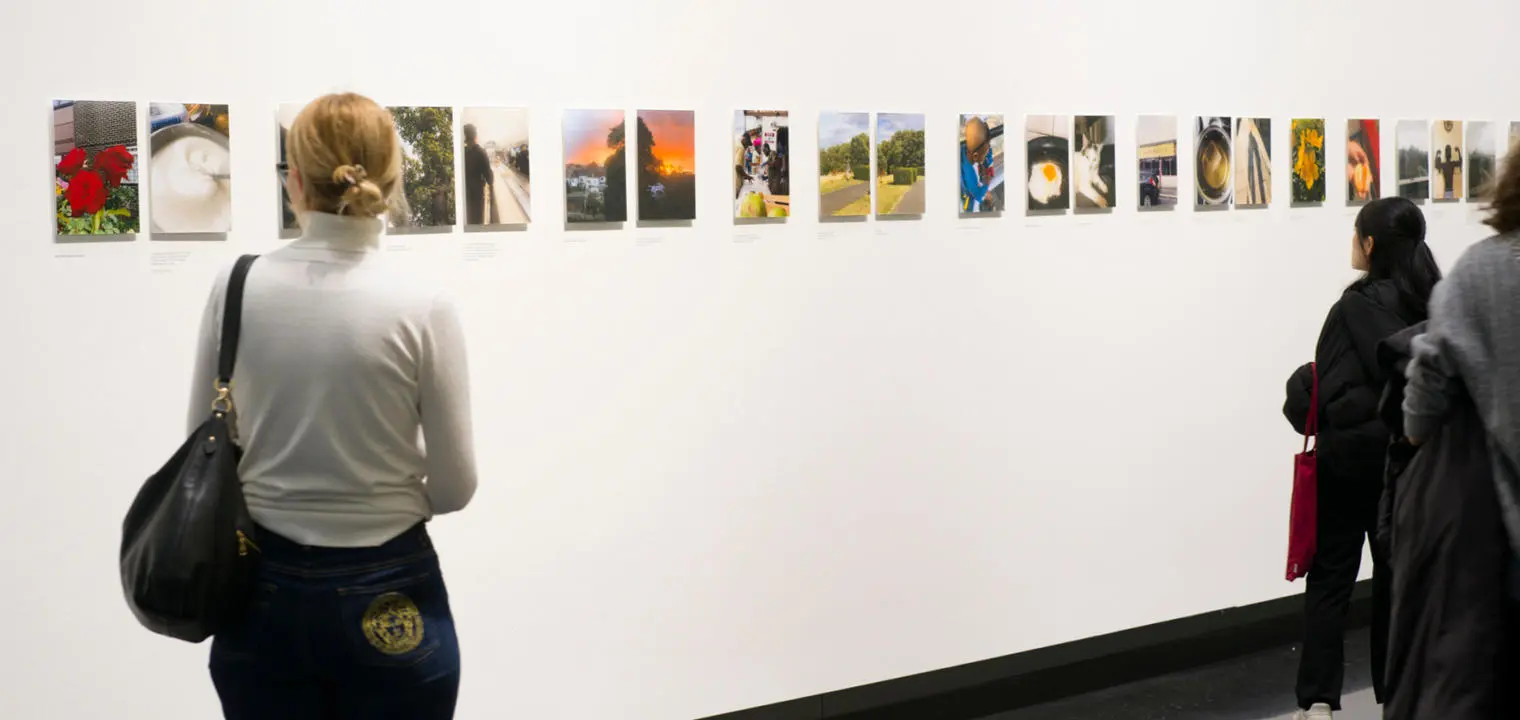
Over the past few years, people have been struggling with sharp rises in the cost of food, rent, energy and other necessities while incomes have flatlined – commonly known as the ‘‘cost of living crisis’’. But how has this impacted those already feeling the effects of over a decade of austerity in the UK? How can we better understand the daily experiences hidden behind phrases like ‘‘cost of living crisis’’? Dr Eileen Alexander, Department of Methodology at LSE, explored these questions through a recent creative project in the London borough of Hackney.
Why are things this way? was produced through 11 months of collaboration between Dr Alexander, six Hackney residents, and artist and photographer Andy Sewell. The artwork was on display in LSE’s Atrium Gallery in Spring 2024, bringing together photographs taken by group members with fragments of text from conversations throughout the project. It shows ‘‘how the cost of living intersects with multiple challenges people are facing – around single parenthood, around health, housing, race, around insecure employment, around residency status, around the maintenance of vital informal support networks’’.
Introducing the project at a Research Showcase, Dr Alexander explains that Why are things this way? was inspired by the long legacy of research in and with London communities, citing the work of Maud Pember Reeves, Peter Townsend, Professor Anne Power and Dr Flora Cornish. For her own project, Dr Alexander used creative methods to co-produce a collaborative artwork that was also a piece of research reflecting how Hackney residents were experiencing the cost of living crisis.
Dr Alexander argues that "creative practice helps to reach people and to motivate people who otherwise might not want to contribute or give their time to more traditional forms of research. And I think this is especially important when we are asking people to share challenging experiences." For researchers who are trying to understand others’ lived experience ethically, Why are things this way? demonstrates that "art, and creative methods, offer one way forward".
Everyone felt inspired and encouraged by the idea that we would be doing something creative together.
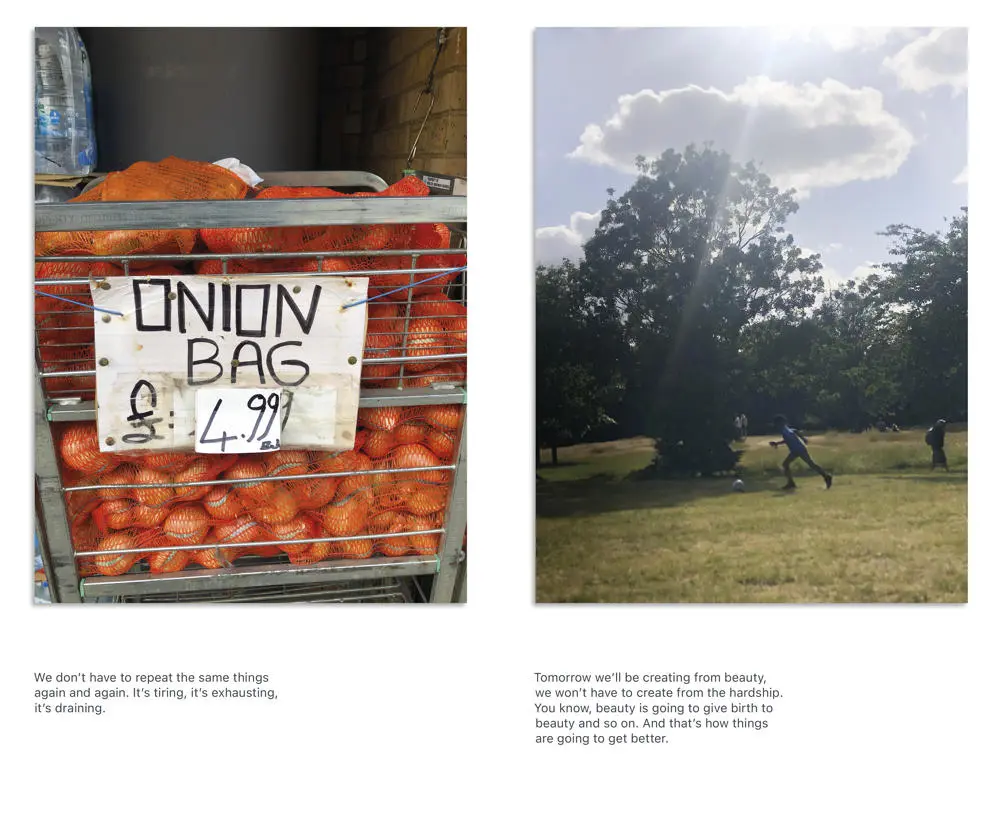
Capturing the cost of living crisis
The project recruited six Hackney residents who self-identified as being severely affected by the cost of living crisis. All the project members – including Dr Alexander and Andy Sewell – lived in the area, so the group met in local cafes, libraries and other community spaces. Participants spoke of the different worlds of Hackney, and the project attempted to cross these ‘‘invisible boundaries’’ between people who live side-by-side.
The make-up of the group not only brought together a diversity of lived experience, but also different types of expertise. Dr Alexander explains: ‘‘Andy is the artist, a sort of artistic consultant on the project; I’m the researcher and the producer; and the six group members were the experts by experience. Their knowledge and expertise made up the heart of the project.’’
Participants were asked to take photos based around prompts – "food and mealtimes", "something beautiful", "something difficult" and "something that helps" – that focused less on the cost of living crisis explicitly, and more on their everyday lives.
At weekly meetings, all the photographs were uploaded for the group to discuss and explore, asking questions such as ‘‘Why did they take this picture? What did it mean? What did it remind them of? What larger ideas were at play? What were they speaking to?’’
Next came the curation stage. Lots of elements were decided collectively – the title Why are things this way? was chosen because members were asking this question week after week. The opening image of the exhibition – a chair in a sunlit room – was selected as it was the first photograph the group saw together.
However, Dr Alexander and Andy Sewell also had a role in untangling what participants had said in meetings to decide what text to include. For this, Dr Alexander had to adapt her academic approach: ‘‘As a qualitative researcher, my instinct is to share detail and complexity. What the members said was really insightful and I wanted to put it all on the wall. But I needed to listen to the group, who wanted to create a group work and not just isolate individual experiences.’’ This collective feeling led to text fragments being interspersed with photographs in the exhibition.
Building the project around creative practice made it possible to move beyond research as extracting people’s experience and towards a kind of research which is built on active engagement.
Creating a space for empathy
Dr Alexander stresses that creative practice was key to the project, in part because it was a powerful motivator: ‘‘everyone felt inspired and encouraged by the idea that we would be doing something creative together, that we’d be working towards a group artwork, something tangible that they could show others, that we could celebrate at the end.’’
As an example, she quotes the experience of one group member who said: ‘‘I’ll be real. In the beginning I wasn’t really up to it … But when you said this about photography, I was like, wow, okay, maybe I might learn something just about life, and myself, so it made me see things differently.’’
This idea of being moved to see things differently was also key to the group’s conversations about their photography. Inspired by the Swiss artist Thomas Hirschhorn, Andy Sewell encouraged the group to reflect not on the photo’s quality, but rather on how it moved them, whether in a good or bad way.
This ethos shaped the creation of the final artwork too. Dr Alexander explains how one group member wanted the charge of seeing image and text together ‘‘to change how the viewer will see that thing moving forward’’ – whether a kitchen sink, a park bench, or a sunset. Photographs were chosen to create ‘‘a space for empathy’’ that ‘‘draws people in, that encourages people to get closer and want to do more, to know more, through imagination, and through a kind of shared understanding and experience’’.
For Dr Alexander, ‘‘building the project around creative practice made it possible to move beyond research as extracting people’s experience and towards a kind of research which is built on active engagement, creating space for people to develop their own reflections and analysis’’. It is this, she says, that ‘‘really reflects the success of the project’’.
[The group] created a challenging artwork, and a piece of research, that reveals what people are experiencing in Britain today.
People in all their complexity
Not only was the project successful through its use of creative methods, but it also showed people in all their complexity. Dr Alexander explains that social science research often reduces people to a single aspect of their experience or one characteristic. The risk with this is that ‘‘we miss out on who participants are as people… and the multiple overlapping experiences and systems that they have to navigate on a daily basis’’.
She cites a fragment of text in the exhibition from a conversation with a group member: ‘‘I feel like I’m in a box. They’ve just put me in a box.’’ Why are things this way? addresses this feeling: ‘‘we’re trying to create a research practice in which people are not boxed in, but are seen in a more holistic way … people who like all of us make mistakes sometimes, and contradict ourselves, but also who think actively and deeply about how to be a good person, and how we might make a better and more just society. People in all their beauty and complexity.’’
The project recognises that ‘‘this beauty and this thoughtfulness of people can be suppressed through manmade systems’’ to the detriment of society. But Dr Alexander also stresses the joyfulness in the collaboration: ‘‘we were asking people to be creative, and respond to each other’s creativity, and this fostered an atmosphere that was positively charged with moments of supportiveness and collaboration and care’’.
Showing hardship, creating beauty
For Dr Alexander, Why are things this way? has contributed to one of LSE’s founding principles: to work towards the betterment of society. Discussing the project’s title, Dr Alexander observes that ‘‘contained in this question is a belief that things can be different, that life can be another way, and that things can be better for people’’.
She ends her talk by quoting one of the final texts in the artwork from a group member: ‘‘tomorrow we’ll be creating from beauty, we won’t have to create from hardship. You know, beauty is going to give birth to beauty and so on. And that’s how things are going to get better.’’ Dr Alexander believes that ‘‘the group succeeded in doing this. They created a challenging artwork, and a piece of research, that reveals what people are experiencing in Britain today. But they did this out of a creative process that was collaborative, supportive and in many ways, beautiful.’’
Dr Eileen Alexander’s Research Showcase was written up by Rosemary Deller, Knowledge Exchange Support Manager at LSE.
Images by Andy Sewell and the Why are things this way? group members
Download a PDF version of this article
